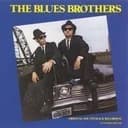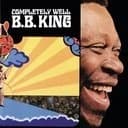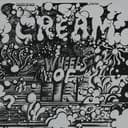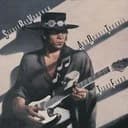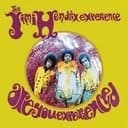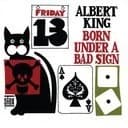The E Blues Scale holds a special place in guitar-based blues and rock music, as E is one of the most guitar-friendly keys in Western music. The open low E string serves as a natural drone and root note, allowing guitarists to bend strings with authority while maintaining harmonic stability. The "blue note"—the ♭5 (A♯/B♭ in E blues)—represents a deliberate pitch ambiguity that doesn't conform to strict Western diatonic theory. Blues guitarists typically "bend" this note, moving fluidly between the perfect 4th (A) and perfect 5th (B), creating the microtonal inflections and vocal-like expressions that define authentic blues guitar technique. This pitch bending is particularly effective on guitar's third and second strings (G and B), where half-step and whole-step bends feel natural and powerful. The ♭5 interval creates tritone tension against the root E, producing the edgy dissonance that resolves beautifully when sliding to either the 4th or 5th degree. In electric blues and rock, this tension becomes even more pronounced through distortion and overdrive, transforming simple scale patterns into powerful emotional statements.
Why Guitarists Love E Blues
The E Blues Scale is arguably the most popular blues scale for guitarists, and for excellent reasons. The key of E allows extensive use of open strings (E, B, and sometimes G), creating a fuller, more resonant sound that's impossible to replicate in other keys. Open string drones complement blues licks perfectly, adding harmonic depth and sustain while freeing up the fretting hand for expressive bends, vibrato, and slides. The scale sits comfortably across multiple positions on the fretboard, with the most famous "box pattern" starting at the 12th fret (where E repeats an octave higher) feeling natural and accessible. This positioning allows guitarists to execute wide bends, particularly the iconic bend from A to B on the second string, which has defined countless classic blues and rock solos. Beyond physical comfort, E blues works perfectly with standard guitar tuning's open chord shapes—E7, A7, and B7 form the I-IV-V progression naturally playable in open position. This practical advantage explains why legendary blues-rock guitarists from Eric Clapton's "Crossroads" to Stevie Ray Vaughan's "Texas Flood" gravitate toward E for their most powerful performances. For intermediate and advanced players, combining the E Blues Scale with E Minor Pentatonic across the entire fretboard unlocks limitless improvisational possibilities.
Blues Scale Application and Technique
The E Blues Scale excels in improvisation over blues progressions, particularly the standard 12-bar blues form in E (E7-A7-E7-B7-A7-E7). Unlike scales requiring careful note selection over changing chords, the blues scale works remarkably well over all three dominant seventh chords (I7, IV7, V7) simultaneously, making it perfect for beginning to intermediate improvisers. When soloing, emphasize the blue note (A♯) by approaching it from either the 4th (A) or 5th (B) and letting it resolve naturally—this creates the signature "blues lick" sound heard in thousands of classic recordings. Focus on rhythmic variations, triplet phrasing, and call-and-response patterns rather than simply running up and down the scale. On guitar, incorporate techniques like string bending (especially on the G and B strings), hammer-ons, pull-offs, and slides to add expressive nuance. The scale functions equally well over rock power chord progressions, funk vamps, and even metal riffs. Many guitarists start with the "pentatonic box" at the 12th fret and gradually add the ♭5 (A♯) as a chromatic passing tone, creating instant blues authenticity. Practice playing the scale with different rhythmic feels—shuffle, straight eighths, and swing—to develop versatility across blues, rock, and jazz contexts.
E Blues in Rock and Modern Music
While rooted in blues tradition, the E Blues Scale has become fundamental to rock, hard rock, and heavy metal guitar playing. The key's power and resonance on guitar translates perfectly to high-gain, distorted tones, where the blues scale's inherent tension creates aggressive, compelling riffs and solos. Jimi Hendrix revolutionized the scale's application in psychedelic rock, using E blues patterns with effects, feedback, and innovative rhythmic phrasing. Led Zeppelin's Jimmy Page built epic solos around E blues vocabulary, demonstrating how the scale transcends traditional 12-bar structures. In contemporary music, guitarists like John Mayer bridge blues tradition and modern pop, using E blues scale patterns with sophisticated production and chord progressions. The scale's versatility extends to country-rock, southern rock, and blues-influenced pop music. When practicing, experiment with combining E Blues with the E Natural Minor scale or E Mixolydian mode to add harmonic sophistication beyond straightforward blues progressions. The blues scale's simplicity is deceptive—mastering its expressive potential requires years of practice, listening to blues masters, and developing your personal voice within this timeless musical framework.
Learning Path and Practice
To master the E Blues Scale on guitar, start by learning the primary "box pattern" at the 12th fret, where your index finger plays E on the low E string's 12th fret. Practice moving through this pattern slowly, focusing on clean note articulation before adding bends and vibrato. Once comfortable, explore the same scale in different positions: open position (utilizing open strings), around the 5th fret, and at the 7th fret. Connect these positions by learning transitional licks that move horizontally across the fretboard rather than staying locked in one position. Record yourself playing a simple E7-A7-B7 blues progression and practice improvising over it, gradually incorporating characteristic blues techniques like string bending, call-and-response phrasing, and rhythmic displacement. Listen extensively to blues masters who favored E blues—B.B. King, Albert King, Freddie King, Stevie Ray Vaughan, and Eric Clapton—studying how they use space, dynamics, and phrasing rather than playing constant streams of notes. The key to authentic blues expression lies not in playing many notes quickly, but in making each note count through precise timing, emotional vibrato, and thoughtful melodic construction. Consistent practice with backing tracks, jamming with other musicians, and transcribing classic blues solos will develop your command of the E Blues Scale and transform it from a simple pattern into a powerful vehicle for musical expression.
